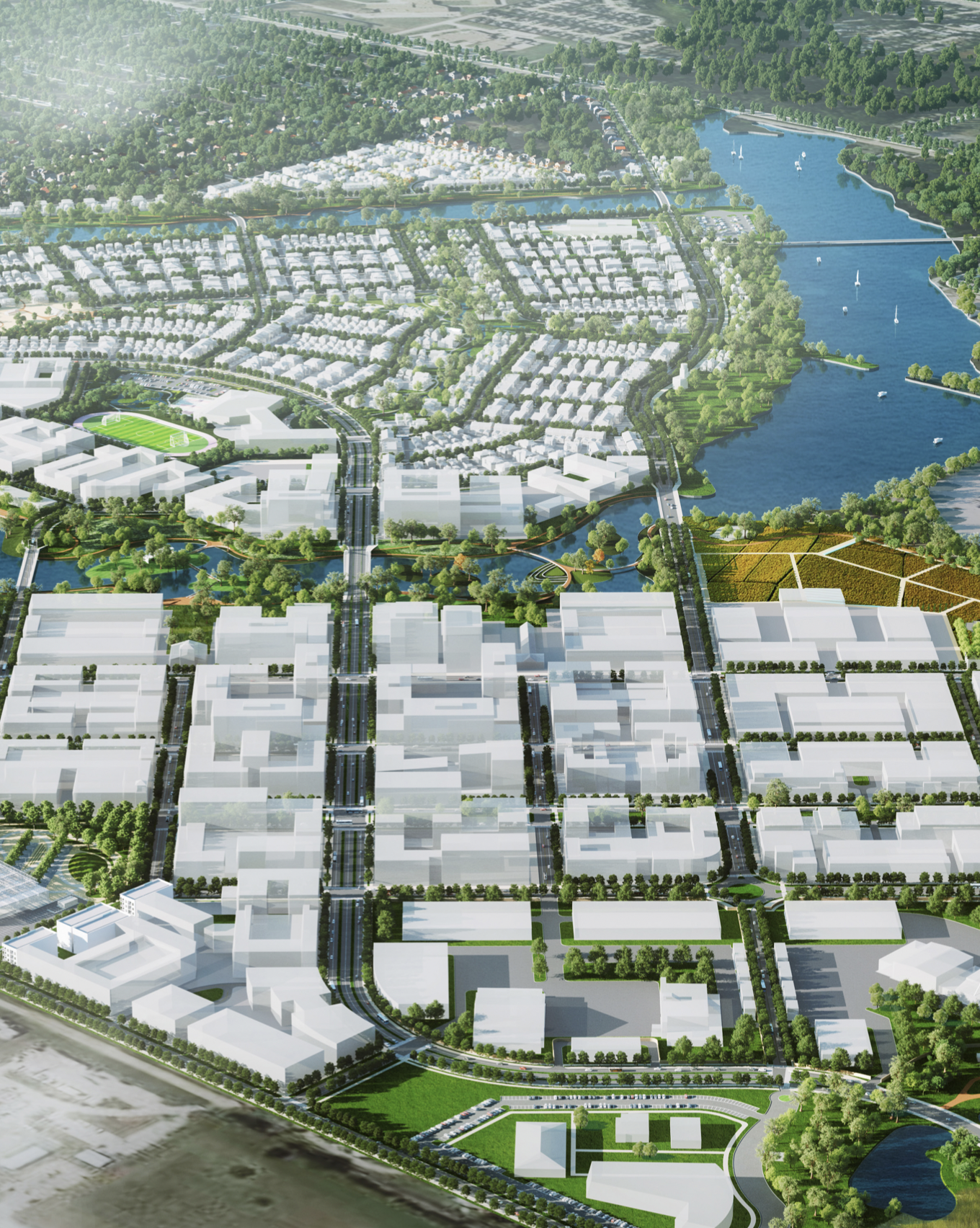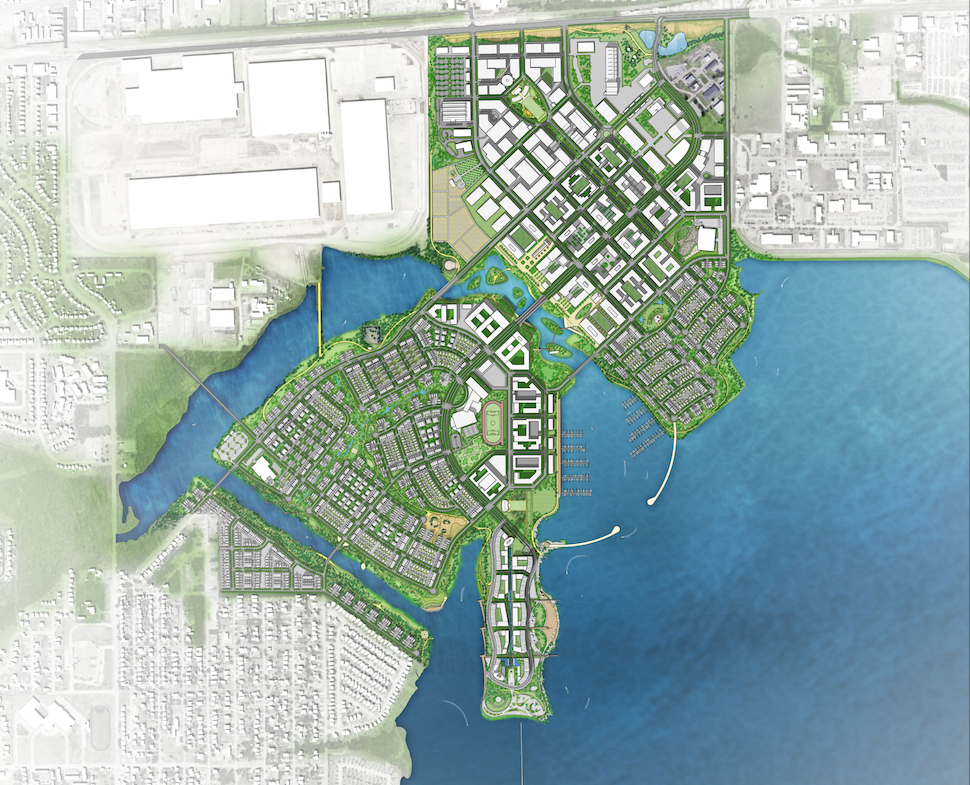Twenty-four years after it was decommissioned by the U.S. Navy, a former naval air station on Mountain Creek Lake in Southwest Dallas just got a bright new future.
Last week the Dallas City Council approved a 20-year, $390 million master plan for redeveloping Hensley Field. If the plan is fully realized, the site could become a walkable, 738-acre mixed-use community with 6,800 residential units, a 40-acre “Innovation Village” on the Runway Peninsula, waterfront trails, a new marina, and historic preservation of the site’s military and pre-military heritage.
According to the master plan, the redevelopment could lead to a diverse mix of commercial, institutional, and residential uses that could accommodate 12,000 jobs and offer living space for 12,000 residents.
The plan calls for 185 acres of open public space, including “an interconnected network of community and neighborhood parks, greenways, natural preserves, and over 7.5 miles of on-site trails oriented to Mountain Creek Lake.”
The city will now look to identify a master developer for the project.
Plan developed by the city in collaboration with MCann Adams Studio

Another rendering of the Hensley Field master plan. [Iimage: City of Dallas]
The master plan was developed by the city of Dallas planning and urban design office in collaboration with Austin-based McCann Adams Studio.
Tax-increment financing could raise between $198 million to $243 million in property tax revenue over the next two decades to help pay for the plan, according to the Dallas Morning News, with bond funding, federal infrastructure grants, and funds from the American Rescue Plan Act among other suggested ways to get to that $390 million figure.
‘Almost like a blank canvas’

Overvhead view of the Hensley Field master plan. [Image: City of Dallas]
Peer Chacko, director of planning and urban design for the city of Dallas, said last year that the site could become more than just another development.
“This site represents a huge opportunity for creating what would really amount to a small town,” Chacko told D Magazine. “I don’t think its potential can be overstated. For Southern Dallas, which has been under-invested in for decades, this represents a huge opportunity if the city plays its cards right.”
With the master plan now approved, Dallas City Council members are excited about where it will all lead.
“This is one of the greatest projects that’s going to happen in the future of the city,” said Jaynie Schultz, a council member representing District 11, according to CBS DFW.
“Now we have an opportunity to make something beautiful of this location,” said Council Member Casey Thomas, whose district includes Hensley Field, according to the DMN. “It’s almost like a blank canvas.”
Hensley Field dates back to 1929, when it was an Army Air Corps training base

Part of the Hensley Field timeline as seen in master redevelopment plan. [Image: City of Dallas]
Formerly known as Dallas Naval Air Station before it was decommissioned in 1998, the site has been buzzed by everything from WWII-era planes to F-4 Phantoms and F-14 Tomcats. It’s now known by its original name of Hensley Field. That’s what it was called in 1929, when it was first established by the city of Dallas as a training field for Army Air Corps pilots. According to Wikipedia, the base was named after Major William N. Hensley, a local flying instructor who was on the first trans-Atlantic dirigible crossing in 1919.
Last year, Dallas Mayor Eric Johnson called Hensley Field “a hidden gem that is ripe for major redevelopment,” adding in a tweet, “This is a chance to build for the future and grow Southern Dallas—without upending any existing neighborhoods.”
Contaminant cleanup continues at the site
When the U.S. Navy transferred ownership of the base to the city of Dallas, toxic deposits of jet fuel, lead paint, and DDT were found around the site, leading to a cleanup effort by the Navy that’s cost $92 million to date.
That effort is still continuing, the DMN reports.
![]()
Get on the list.
Dallas Innovates, every day.
Sign up to keep your eye on what’s new and next in Dallas-Fort Worth, every day.































